Breathing Coral
23rd May – 25th May 2024
Language: Danish | English
Scroll down to see the images of the corals.
And press the read more link to
read about the video portraits in the installation.
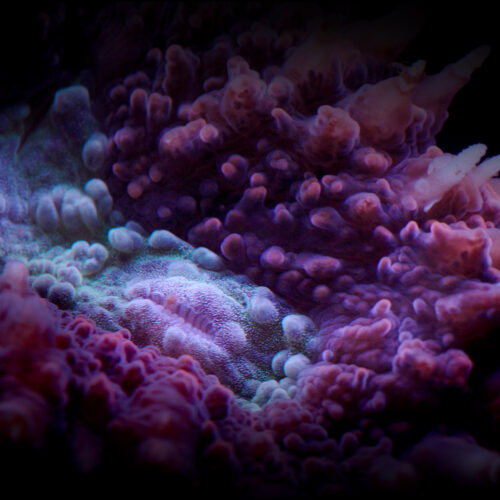
Lobophyllia – Read more
Genus: Lobophyllia
The coral is hungry; it opens its mouth, ready to eat.
A small brine shrimp (Artemia) floats around in the water.
Inside the mouth, the coral prepares a bundle of curled, white mesenterial filaments: thread-like parts of its innards that contain stinging cells and are used to paralyze and capture prey.
Playback speed: 30x.
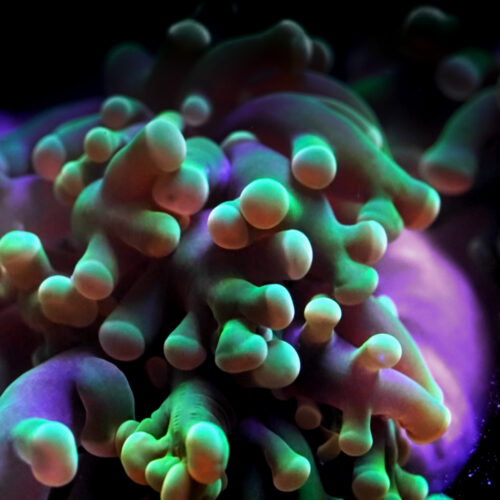
Euphyllia – Read more
Genus: Euphyllia
The coral is very sensitive and detects the slightest changes in the water around it.
When it senses a potential threat, it instinctively retracts its tentacles in an attempt to protect itself.
Playback speed: Real-time.
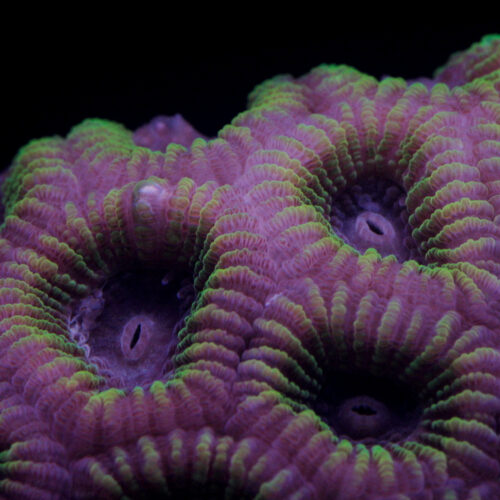
Dipsastraea – Read more
Genus: Dipsastraea
Three times an hour, all the polyps in the colony perform a synchronized, breath-like movement.
The coral doesn’t have a brain but possesses a network of nerves that allow the polyps to sense and respond to each other’s impulses.
The movements are shown in real-time, while the playback speed between them is 15x.
The movement occurs every 2 minutes.
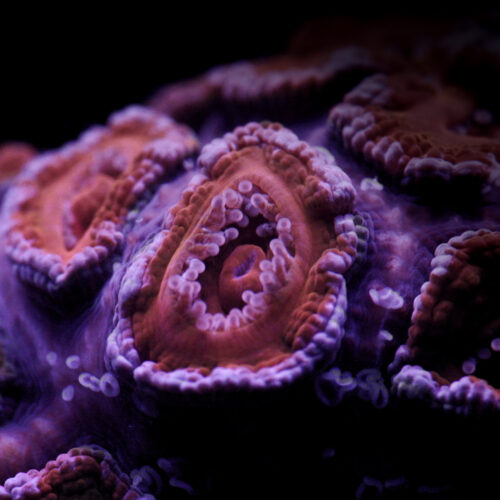
Acanthastrea – Read more
Genus: Acanthastrea
The coral feels under attack.
To defend itself, it extends white mesenterial filaments: thread-like extensions of its inner tissue.
These filaments are filled with stinging cells that can harm any enemy.
When the danger passes, the coral retracts the filaments back into its tissue.
Playback speed: 5x.
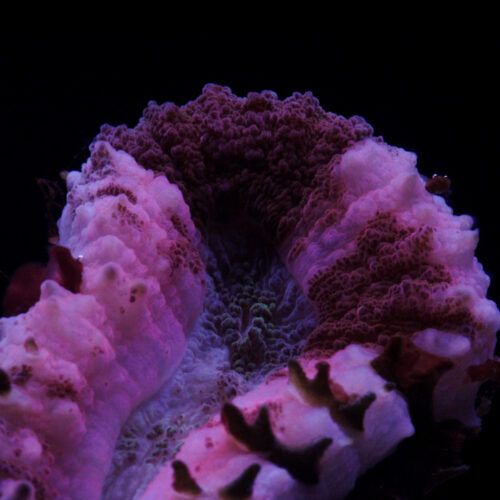
Lobophyllia – Read more
Genus: Lobophyllia
The coral is partially bleached, the tissue has become thinner and thinner, and in some areas, the skeleton has been exposed.
These changes are the coral’s response to prolonged stress.
Where the skeleton is overgrown by algae, coral tissue cannot grow back.
Playback speed: 50x.
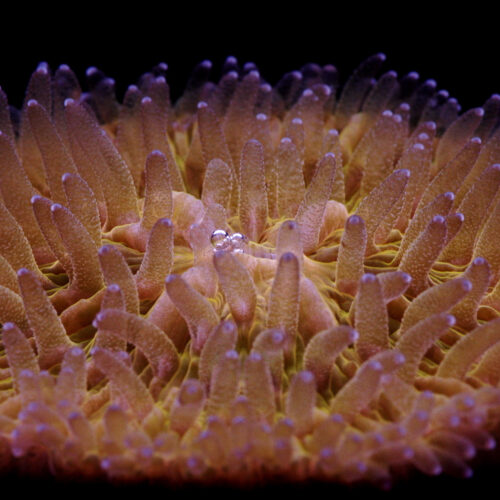
Fungia – Read more
Genus: Fungia
The coral undergoes a gradual bleaching during a 12-day heat experiment.
In the complete transformation from healthy coral to the stage just before death, the coral expels symbiotic algae through its mouth.
These algae provide color to the coral and perform photosynthesis.
Without the algae, the coral starves and dies.
The video shows approximately 1 minute of footage from each day of the experiment.
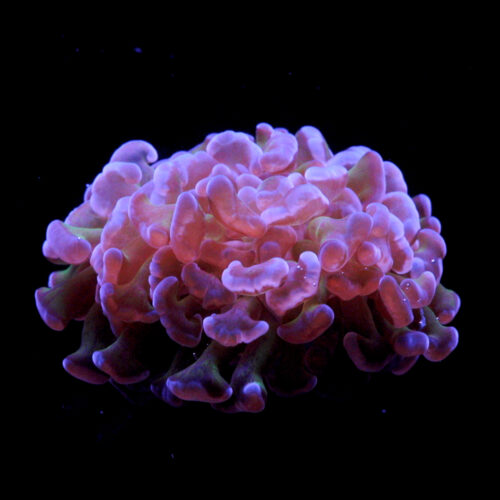
Euphyllia – Read more
Genus: Euphyllia
The coral’s water-filled tentacles are out day and night. Beneath them lies the animal’s hidden mouth.
The tentacles are moved by the flow of the surrounding water.
In a split of a second, the coral retracts them all as part of a water exchange from the hidden mouth.
This occurs with intervals of 7-9 minutes.
Playback speed: Real-time.
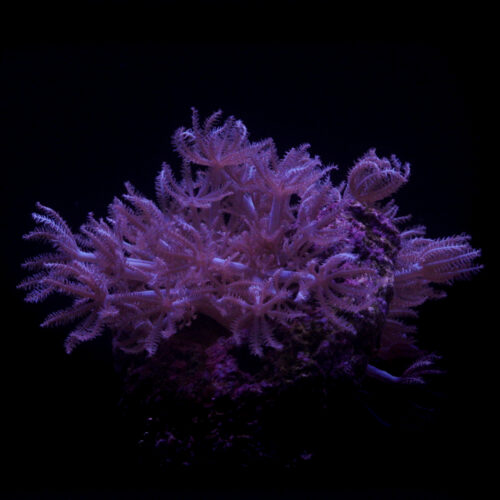
Xenia – Read more
Genus: Xenia
The coral pulses to enhance its ability to breathe.
The pulsing mechanism keeps the water circulating around the coral, thereby regulating the oxygen concentration near its tissue surface.
After the darkness of the night, the polyps spend an hour rising towards the light for the benefit of the photosynthetic algae symbionts residing within the coral tissue.
Playback speed: Real-time.
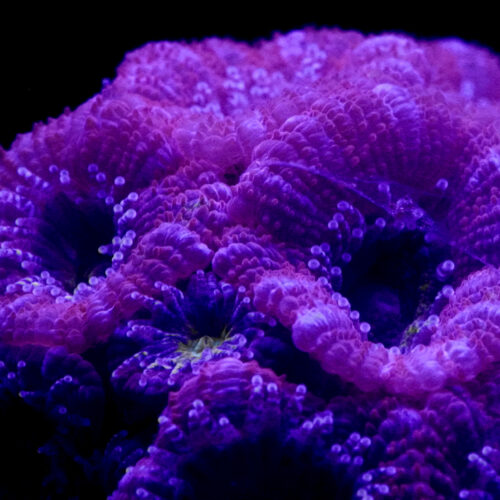
Acanthastrea – Read more
Genus: Acanthastrea
The coral is relaxed and has its tentacles extended.
Changing light triggers different color pigments in the tissue.
The coral experiences white light if it lives close to the ocean surface; it perceives blue light if it resides in deep water.
The movements in the coral’s body and tentacles are immediate reactions to the fact that it is sensing the changes in light.
Light frequency: approximately 1 minute.
Playback speed: 3x.
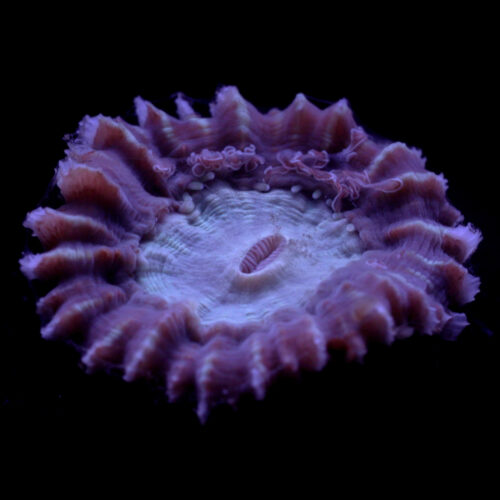
Caulastraea – Read more
Genus: Caulastraea
The recording spans over a day during which the coral is subjected to a heat experiment.
The coral contracts its tissue, revealing the skeleton.
The animal constantly releases filaments from its tissue and mouth, and produces mucus around itself.
All activity is a stress response to the heat.
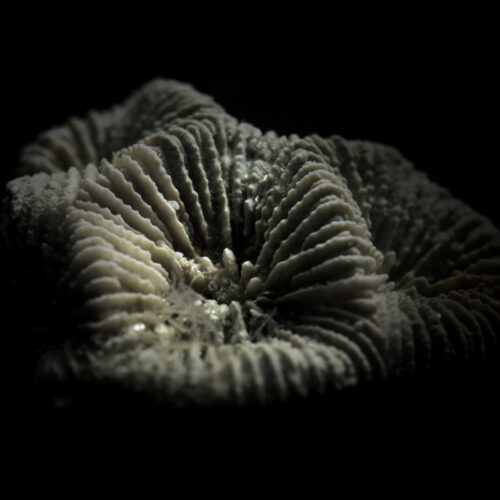
Favites – Read more
Genus: Favites
The coral animal is no longer alive.
All tissue is gone, leaving behind a bare skeleton.
Soon, algae will overgrow the skeleton.
Playback speed: Real-time.
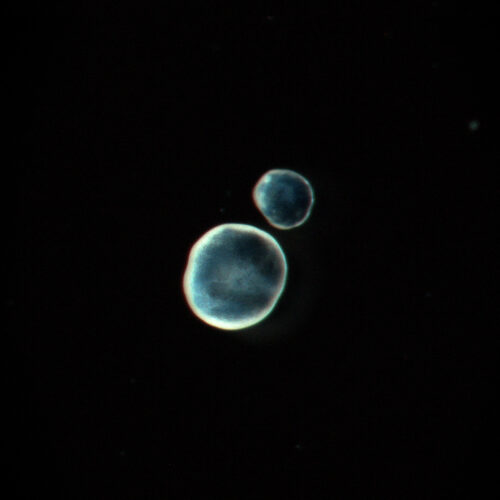
Pocillopora – Read more
Genus: Pocillopora
Coral polyps have detached from their skeleton in response to stress and are swirling restlessly in the water.
Rotation is their nature and they will only cease if the polyp finds a new opportunity to settle.
Playback speed: Real-time.
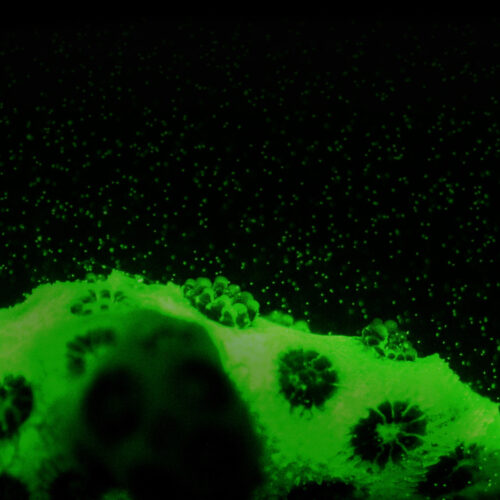
Pocillopora – Read more
Genus: Pocillopora
The coral regulates the oxygen level near its surface using microscopic hairs – also known as ‘cilia’.
Cilia are incredibly small, but their movements create small vortices that become apparent with the addition of fluorescent particles to the water.
The particles in the surrounding water flow smoothly, but near the coral surface, small “jumps” are observed: an evidence of cilia in action.
Playback speed: Real-time.